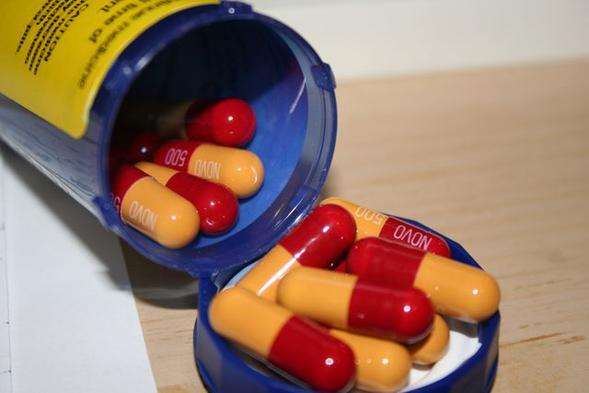Saving endangered drugs

In between the discovery of promising drug candidates for diseases and the ability to buy and sell those drugs in the marketplace lies the Valley of Death. That's the industry term for the failure of well-researched and potentially very useful medicines to make it to market due to regulatory hurdles, patent fights and the sheer cost of pushing drugs all the way through clinical testing. In a recent commentary article in the journal Future Medicinal Chemistry, San Diego State University biologist Roland Wolkowicz makes the case that stronger, more fruitful partnerships between academia and industry are needed to shepherd drugs from the lab to the patient's bedside.
In the traditional drug discovery and development model, academics make an initial, basic-research finding, then industry refines the discovery using methods that are usually too expensive, time-consuming and labor-intensive for university researchers. This was a fairly successful model for many years, Wolkowicz said, because there was a lot of low-hanging fruit in the world of small-molecule drug discovery. The regulatory hurdles in the past were lower, as well.
"Aspirin was given to patients for 50 years without people really knowing how it worked," Wolkowicz said. "Today, it probably wouldn't be approved, at least not so easily."
Increasing difficulty
The reality today is that screening for useful, nontoxic drug compounds is becoming increasingly difficult across the academic-industry spectrum, he said. As Wolkowicz notes in the recent paper, an academic scientist might create an assay—essentially, a way to test the effect of a chemical compound—that screens for a compound that has some desired effect within the cell. Let's say it blocks a certain cellular process known to be involved in cancer. Blocking this process might also kill the cell, but there's a possibility that with further refining, the technique might result in something that blocks the harmful, cancer-causing property while keeping the cell alive.
Such a finding would be a win for the academic scientist. But industry scientists working in drug development might see it differently. They might balk at the time and cost involved in refining the discovery to the point that it could make a decent drug candidate. From the drug developer's perspective, it's simply not profitable to take those kinds of risks on a drug that might not even make it to clinical trials.
Toxic balancing act
This balancing act between identifying a chemical compound that targets a harmful cellular process—finding a hit, in drug discovery parlance—and getting it to the point that it won't kill the cell is one of the primary obstacles for drugs moving through the Valley of Death, explained Wolkowicz, who chaired a discussion about bridging the gap between basic research and commercial application earlier this year at the SelectBio 2015: Academic Drug Discovery Conference in Cambridge, UK.
"Many drugs fail because the potency of the hit, at first, isn't strong enough, so you increase the concentration and then it becomes toxic, even though it wasn't toxic before," he said.
Wolkowicz argues in his commentary that offloading more of the early-stage drug refining processes to academia would allow academic and industry scientists to move more promising drugs all the way through the drug development pipeline. Academia doesn't concern itself with profit, so the cost and time spent on further researching a potential hit isn't the same obstacle that it is for industry.
At the same time, such research does require funding, and industry could help offset these costs by sharing their immense resources.
Profit-sharing
Ideally, the new system would work like this: As before, academics would do basic research to identify chemical compounds that have some desired effect in the cell. Once they find something, industry partners would lend their high-powered screening technology and chemical library to the academic scientists so that they can further refine and validate their findings. Then, when a particular compound looks like it could make a promising drug candidate, industry can step in and help usher the drug through clinical trials and ramp up production. The academic-industry partnership would continue as the academic scientists help the drug meet safety and effectiveness requirements.
"When and if access to large chemical libraries and the extreme costs of high-throughput screening aren't issues, academia can do more of this early screening," Wolkowicz said. "And they can help industry clear FDA and regulatory hurdles."
How exactly academia and industry would share the costs and profits of this enterprise remains to be decided, but there are a number of ways it could happen, he added.
"The fear of industry, historically, is that if they start sharing more of their workload with academia, that academia will suck away profits because it's so expensive to push drugs through clinical trials," Wolkowicz said. "But there are ways to share profits that are fair to everyone."
More information: Roland Wolkowicz. Narrowing the translational research gap: what needs to be done?, Future Medicinal Chemistry (2015). DOI: 10.4155/fmc.15.123
John Spencer et al. Highlights from SelectBio 2015: Academic Drug Discovery Conference, Cambridge, UK, 19–20 May 2015, Future Medicinal Chemistry (2015). DOI: 10.4155/fmc.15.118


















